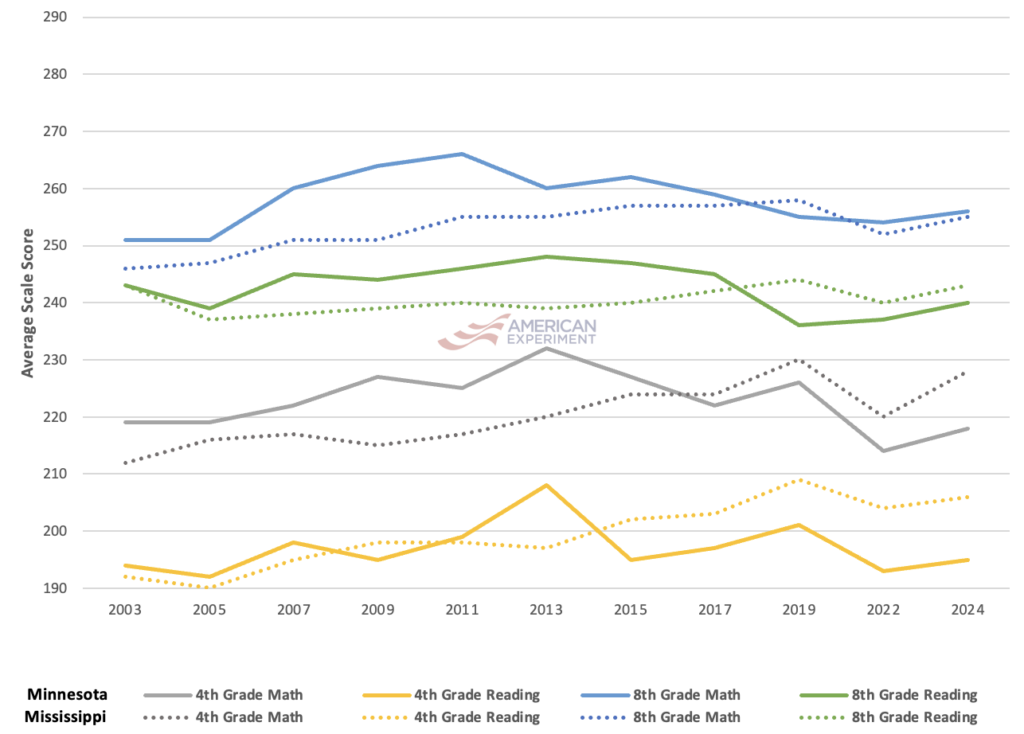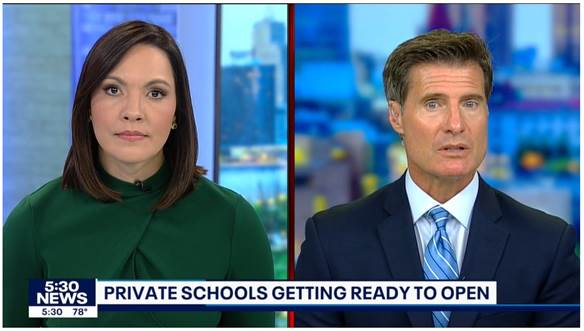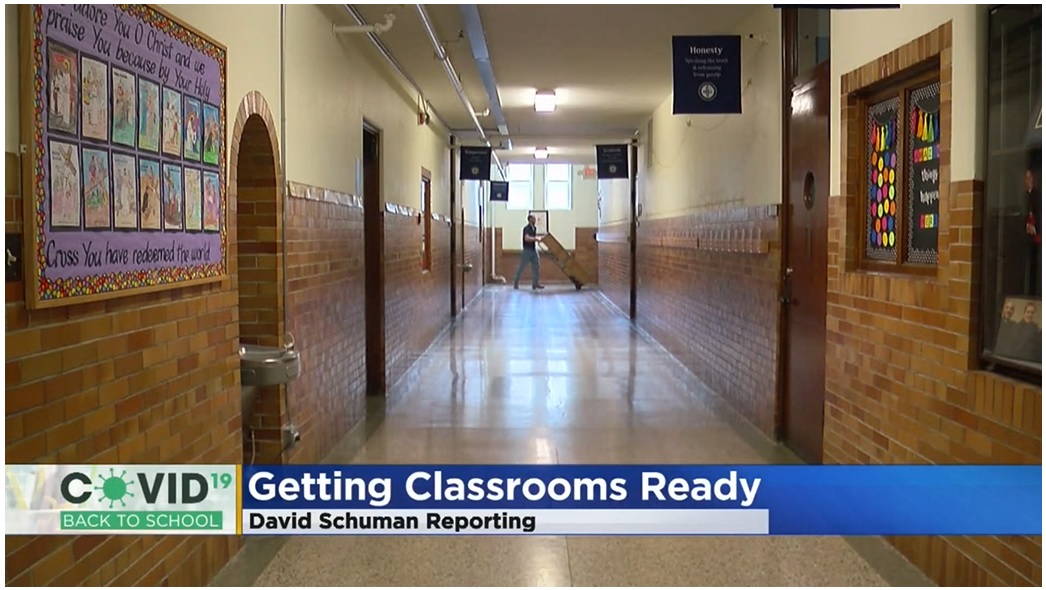For a state with low performance rankings across a number of metrics, the rise of Mississippi as a national exemplar in math and reading growth has been hard for many to accept. The state’s successes have not been completely unacknowledged, but there is a reluctance to admit that certain components of its education system could be a model to learn from.
I have been pointing out how the Magnolia state can show the North Star state a thing or two about helping students academically for a number of years. (Even a U of M data analyst couldn’t accept such findings, and inaccurately called them out.)
The release of 2024 national test data earlier this year once again made this point. Mississippi black students outperformed Minnesota black students in fourth-grade reading and math and eighth-grade reading. (Minnesota black eighth graders outperformed Mississippi black eighth graders in math by one point.)
This outperformance is not a one-off. Mississippi black fourth graders have consecutively scored higher than Minnesota black fourth graders on the National Assessment of Educational Progress (NAEP) reading test since 2015 and higher on the NAEP math test since 2017.
Mississippi black students make up 47 percent of the state’s student body (204,558) compared to Minnesota’s 12 percent (102,511).
Despite Mississippi’s “historically awful record on civil rights — including its refusal to integrate schools” — black students in the state posted the third highest fourth-grade reading scores in the nation and “walloped their counterparts in better-funded states,” writes Tim Daly, CEO of EdNavigator, for The Free Press.
Comparing other student group performance, Mississippi Hispanic students outperformed Minnesota Hispanic students in fourth-grade reading and math and eighth-grade reading and math, and this has been the case since 2017 across both grade levels and subject areas.
Minnesota spends about 33 percent more per student than Mississippi for these lower results.
National Assessment of Educational Progress, Average Scale Scores, Black Students

But what about the statewide NAEP scores? Minnesota outperforms Mississippi’s statewide averages except in fourth-grade reading.
Well, as I have also repeatedly written, states serve very different student populations, and because of this comparing one state’s average NAEP scores to another state’s average NAEP scores ignores student heterogeneity and can miss — or overstate — how well a state and its policies serve its very different student populations.
After accounting for differences in states’ student demographics (race/ethnicity, gender, age, free and reduced-price lunch, special education status, and English language learner status), Mississippi’s adjusted average NAEP scores are higher than Minnesota’s in both fourth-grade reading and math and eighth-grade reading and math. (In fact, Mississippi’s adjusted national results placed them 1st in fourth-grade math, 1st in fourth-grade reading, 1st in eighth-grade math, and 4th in eighth-grade reading.)
Science of reading, third-grade retention, school choice
From overhauling its reading pedagogy to training educators in the science of reading to the state’s literacy-based promotion act (required third-grade retention policy) to several school choice programs, Mississippi is showing that how money is spent matters far greater than how much is spent.
Of course, Mississippi’s education system still has room for reform, but as Daly points out, “we need to celebrate their thoughtful statewide strategy that has dramatically improved results without a colossal increase in spending. Their progress is not a fluke. It’s a clue.”
Minnesota lawmakers did provide a number of educators training in the science of reading through one of the same programs that Mississippi has used — the Language Essentials for Teachers of Reading and Spelling (LETRS). Minnesota has also overhauled the state’s approach to literacy through the Reading to Ensure Academic Development (READ) Act, which requires teacher preparation programs, districts, and teachers to use evidence-based reading strategies. The READ Act is still being rolled out, and the Minnesota Legislature is negotiating some potential new pieces to it this session, so we will see if it can help spur a similar Mississippi miracle here.
With less than half of Minnesota students reading at grade level for the second year in a row, it would be a welcome result.













